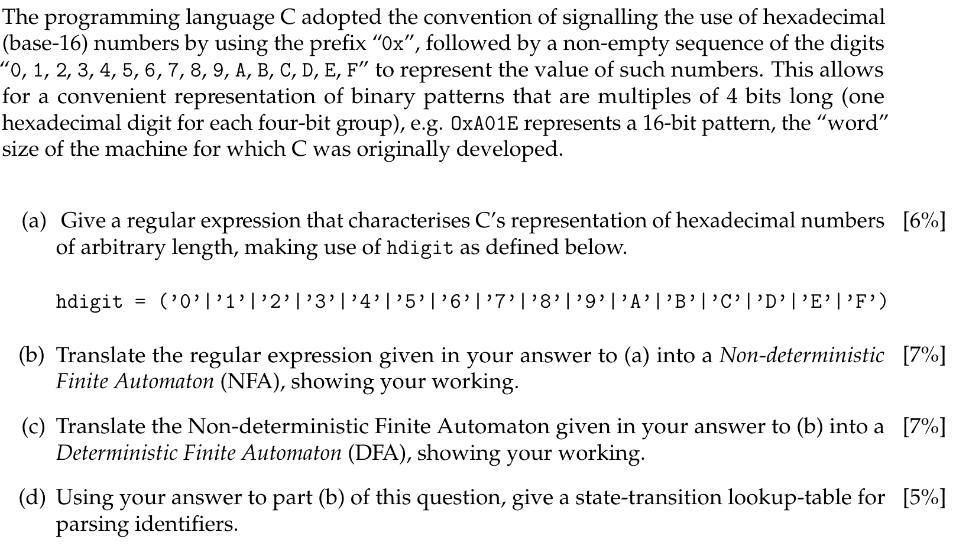Answered step by step
Verified Expert Solution
Question
1 Approved Answer
The programming language C adopted the convention of signalling the use of hexadecimal (base-16) numbers by using the prefix Ox, followed by a non-empty

The programming language C adopted the convention of signalling the use of hexadecimal (base-16) numbers by using the prefix "Ox", followed by a non-empty sequence of the digits "0, 1, 2, 3, 4, 5, 6, 7, 8, 9, A, B, C, D, E, F" to represent the value of such numbers. This allows for a convenient representation of binary patterns that are multiples of 4 bits long (one hexadecimal digit for each four-bit group), e.g. OxA01E represents a 16-bit pattern, the "word" size of the machine for which C was originally developed. (a) Give a regular expression that characterises C's representation of hexadecimal numbers [6%] of arbitrary length, making use of hdigit as defined below. hdigit ('0'|'1'|'2' 1'3'1'4'1'5'1'6'|'7'1'8'1'9''A''B''C' | 'D' | 'E''F') (b) Translate the regular expression given in your answer to (a) into a Non-deterministic [7%] Finite Automaton (NFA), showing your working. (c) Translate the Non-deterministic Finite Automaton given in your answer to (b) into a [7%] Deterministic Finite Automaton (DFA), showing your working. (d) Using your answer to part (b) of this question, give a state-transition lookup-table for [5%] parsing identifiers.
Step by Step Solution
★★★★★
3.31 Rating (151 Votes )
There are 3 Steps involved in it
Step: 1

Get Instant Access to Expert-Tailored Solutions
See step-by-step solutions with expert insights and AI powered tools for academic success
Step: 2

Step: 3

Ace Your Homework with AI
Get the answers you need in no time with our AI-driven, step-by-step assistance
Get Started


